 Submitted by leo on
Submitted by leo on
Living in the hill country means living on minimal water. We get an average of about 30-35 inches per year out this way, west of Austin. When we built our house in 2000-2001 I set up a rainwater collection system that drew from the roof. The water went from the gutters, through some filtration, and into a 10,000 gallon tank. That was good enough for two adults and two small children. Three things have happened since: The kids grew up, we entered a long-term drought, and I built a barn. Bottom line: we needed more water and it was within reach...
This is our barn with the gambrel roof. That steep side presents certain problems with gutter installation. The gutter ends up too close to the edge of the roof. In fact the end of the roof-edge was inside my first gutters.
The first two things, teenagers with their long showers and the drought, led to us having to call the water-delivery truck all-too-often so we needed a solution. We also wanted a vegetable garden and perhaps wash the cars once in a while. First, a few years back, I doubled up on the storage side of the system by hooking a 2nd 10,000 gallon tank up to the system. That actually did little to abate the water delivery, which costs about $85-100 per 1500 gallons. That adds up when you are used to free water!
To compliment the second tank, I installed gutters on my newly-built barn. I took the cost-effective approach and bought those Home Depot/Lowes square-bottom vinyl gutters. Since the barn has a gambrel (i.e. steeply-sloped) roof, it was difficult to fasten the gutters to the facsia board. About two weeks after I installed the gutters on one side of the barn, an ice storm hit. As the ice from the storm melted, sheets of ice slid down the roof into the gutters and took them to the ground. Yup, I had shot of whiskey or two that day...
So...After being pissed off at the world about the gutters, I decided I needed to put up version 2.0 of these gutters. We needed the water. I had to solve a few problems though, and had learned a few things from the first time I installed the rainwater system on the house. The gutters on the house are a better quality vinyl gutter system on a shallow sloped roof. They are still going strong after 15 years and have provided us with most of our total water usage. We have no well. What we collect or have delivered is all we get. I often think that is how water should be collected instead of being sucked out of our aquifers. The water is simply better.
From the "first round" of gutters on the barn, I knew I needed to solve a few problems:
- Ice won't take out the gutters but the rain will still pour in.
- I wanted galvalume gutters. Vinyl is fine, but this Texas heat is brutal, and steel is much stronger in hailstorms. Both my house and barn roofs are made of Galvalume, a coated, galvanized product that seems pretty invincible.
- Cleaning out the rainwater inlets (where the downspout water goes into the collection pipes) was a pain in the ass on the four downspouts we have on the house. I need to make that easier.
- Sometimes during rainy times, I dont want to collect all that water from both the house and the barn. I need a way to passively dump the barn's water without dumping the rest of the water coming from the house... Together, yet separate with an easy way to switch. That was a tough one...
(Click on images to enlarge.)
For the first attempt installing gutters on the barn (Version 1.0), I placed the cheap, square-bottom gutters directly on the fascia. (The diagram is wrong and shows a round gutter.) It collected water fine until an ice storm hit about 2 weeks later. The sheets of ice came down into the gutter, causing it to rip right off the fascia and fall to the ground. For version 2.0, I had to mount framework under the eave to attach the gutter so that ice falls over the gutter while water will still fall in.
Here is the framework on which the gutters will mount. I used galvanized decking brackets attached to the side of the barn to carry the weight of the gutters including the load of the water. On top I used smaller versions of the same type of bracket.
The gutter system I chose has steel mounts that mount to the framework. I put flashing on the top to keep the splashing water off of the framework. It was probably a waste of time but I had extra flashing and wanted to use it up. Lots of ladder work here.
Here is the 6" half-round galvalume gutter, with downspout holes already bored out, ready to put up. It came in 20-foot lenghs from a local retailer. There is only one place in town and it ain't cheap. Round gutter is better because it is self-cleaning. Any leaves and debris will not get stuck in any corners. Galvalume is a coated galvanized steel product that my roofs are also made of. It matches.
Installing this on my tall barn was not easy. I should get some scaffolding. We got it up at a snails pace. Why? because it kept raining. The irony of it all! The winter of 2014-15 sucked. Cold rainy drizzly wet weather. I had also started to lay the collection pipe. When I built the house and installed the original rainwater system, I ran a 4" pipe over to the site where the barn would be built, knowing that someday I would be collecting off of it.
The collection pipes are mostly laid along with the collectors under the gutter downspouts.Doing that pipe-work on the ground was a pleasure compared to putting the gutters and framework up! Everything is gravity-fed. The green pipe sticking up is the input to the main system which drains into the tanks.
Here is a cheap, easily cleanable downspout collector. I had to search the plumbing department of a few hardware stores but with the help of Kelly, managed to piece together a nice collector. Cutting the gutter down spouts at a 45-degree angle allows for easy cleaning of the collector.
To be able to not collect from the barn and separate the barn collection from the main system I deviced a simple means to do it with a drain-off and an uptake pipe where the water has to reach a certain height in the barns pipes to pour over into the (green) main system and into the tanks. If I open the drain-off, the barn water will drain, but not the water from the main system. The drain-off is at the lowest point of the barn's collection system. All this pipe will eventually be buried.
So, what happens when I put my new gutters up? Anothe ICE STORM. Less than a month after getting the gutters up an ice storm again hits. This time all went well. Problem solved!
- Log in to post comments

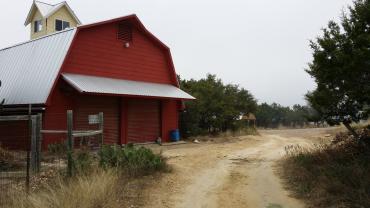
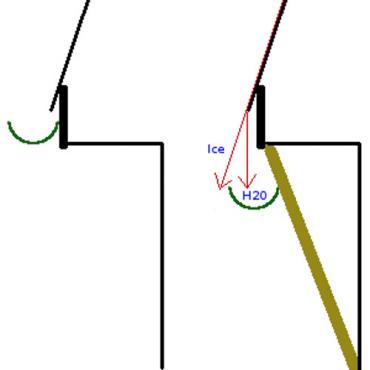
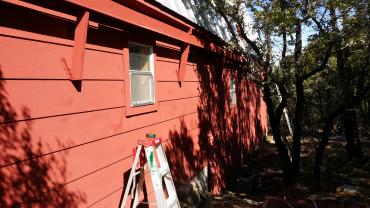
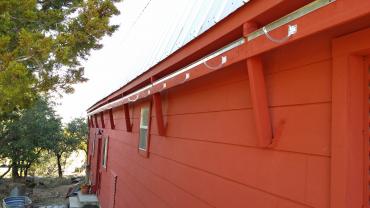
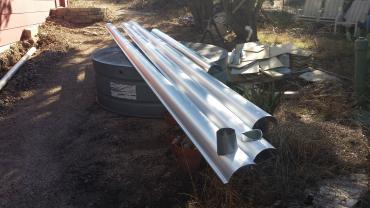
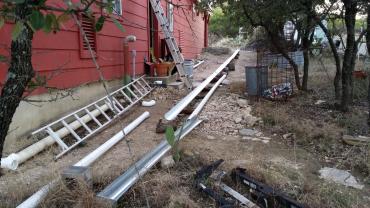
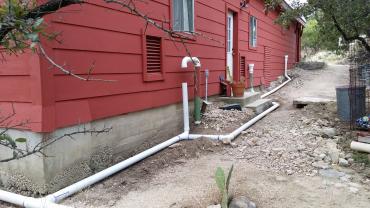
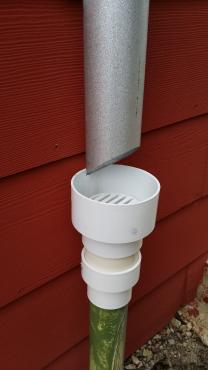
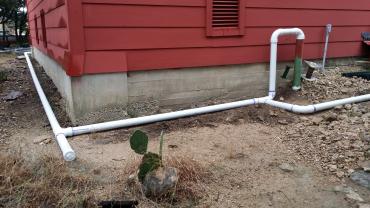
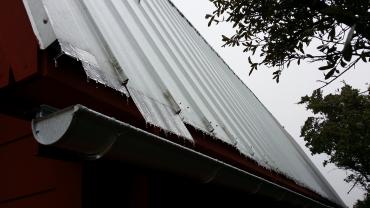
Comments
maurer replied on Permalink
April 2014 Hail Storm
How did that go with these gutters?